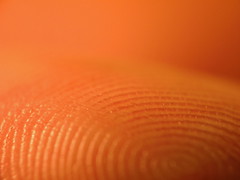A popular Website, phpbb.com, was recently hacked. The hacker published approximately 20,000 user passwords from the site. …
This incident is similar to one two years ago when MySpace was hacked, revealing about 30,000 passwords. …
The striking different between the two incidents is that the phpbb passwords are simpler. MySpace requires that passwords “must be between 6 and 10 characters, and contain at least 1 number or punctuation character.” Most people satisfied this requirement by simply appending “1” to the ends of their passwords. The phpbb site has no such restrictions — the passwords are shorter and rarely contain anything more than a dictionary word.
It’s hard to judge exactly how many passwords are dictionary words. … I ran the phpbb passwords through various dictionary files and come up with a 65% match (for a simple English dictionary) and 94% (for “hacker” dictionaries). …
16% of passwords matched a person’s first name. This includes people choosing their own first names or those of their spouses or children. The most popular first names were Joshua, Thomas, Michael, and Charlie. But I wonder if there is something else going on. Joshua, for example, was also the password to the computer in “Wargames” …
14% of passwords were patterns on the keyboard, like “1234,” “qwerty,” or “asdf.” There are a lot of different patterns people choose, like “1qaz2wsx” or “1q2w3e.” I spent a while googling “159357,” trying to figure out how to categorize it, then realized it was a pattern on the numeric keypad. …
4% are variations of the word “password,” such as “passw0rd,” “password1,” or “passwd.” I googled “drowssap,” trying to figure out how to categorize it, until I realized it was “password” spelled backward.
5% of passwords are pop-culture references from TV, movies, and music. These tend to be youth culture (“hannah,” “pokemon,” “tigger”) and geeky (“klingon,” “starwars,” “matrix,” “legolas,” “ironman”). … Some notable pop-culture references are chosen not because they are popular, but because they sound like passwords, such as “ou812” (’80s Van Halen album), “blink182” (’90s pop), “rush2112” (’80s album), and “8675309” (’80s pop song).
4% of passwords appear to reference things nearby. The name “samsung” is a popular password, I think because it’s the brand name on the monitor that people are looking at … Similarly, there are a lot of names of home computers like “dell,” “packard,” “apple,” “pavilion,” “presario,” “compaq,” and so on. …
3% of passwords are “emo” words. Swear words, especially the F-word, are common, but so are various forms of love and hate (like “iloveyou” or “ihateyou”).
3% are “don’t care” words. … A lot of password choices reflect this attitude, either implicitly with “abc123” or “blahblah,” or explicitly with “whatever,” “whocares,” or “nothing.”
1.3% are passwords people saw in movies/TV. This is a small category, consisting only of “letmein,” “trustno1,” “joshua,” and “monkey,” but it accounts for a large percentage of passwords.
1% are sports related. …
Here is the top 20 passwords from the phpbb dataset. You’ll find nothing surprising here; all of them are on this Top 500 list.
3.03% “123456”
2.13% “password”
1.45% “phpbb”
0.91% “qwerty”
0.82% “12345”
0.59% “12345678”
0.58% “letmein”
0.53% “1234”
0.50% “test”
0.43% “123”
0.36% “trustno1”
0.33% “dragon”
0.31% “abc123”
0.31% “123456789”
0.31% “111111”
0.30% “hello”
0.30% “monkey”
0.28% “master”
0.22% “killer”
0.22% “123123”
Notice that whereas “myspace1” was one of the most popular passwords in the MySpace dataset, “phpbb” is one of the most popular passwords in the phpbb dataset.
…
The password length distribution is as follows:
1 character 0.34%
2 characters 0.54%
3 characters 2.92%
4 characters 12.29%
5 characters 13.29%
6 characters 35.16%
7 characters 14.60%
8 characters 15.50%
9 characters 3.81%
10 characters 1.14%
11 characters 0.22%
Note that phpbb has no requirements for password lengths …
